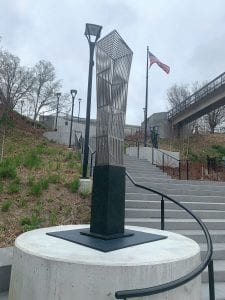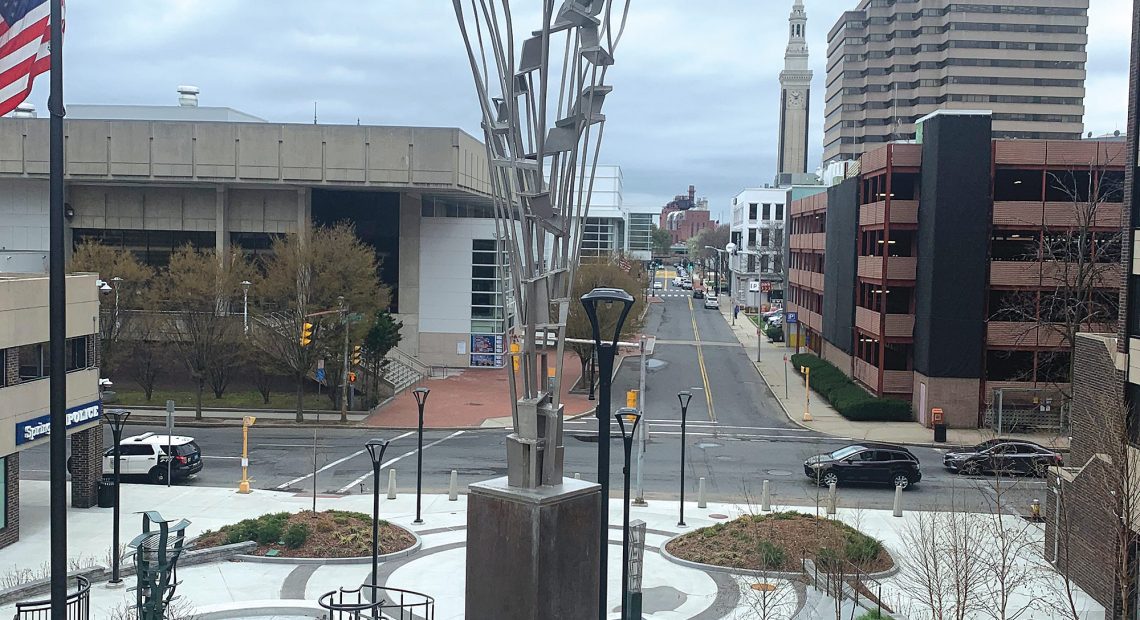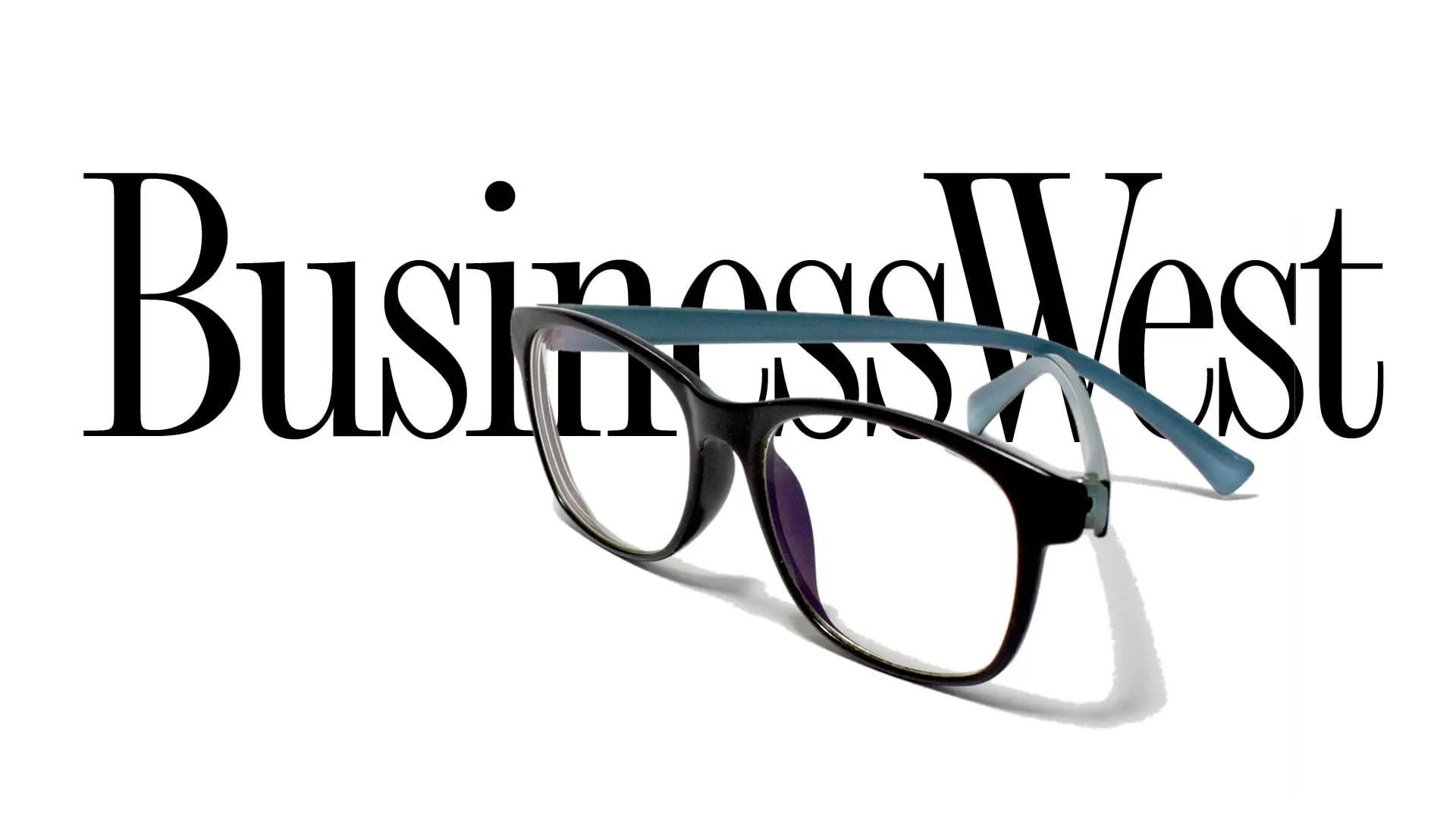
Several sculptures created by Don Gummer now grace Pynchon Plaza, and many more will soon be on display at the Quadrangle.
Kay Simpson calls it “a sculpture takeover.”
That’s how she chose to describe a new exhibit, featuring New York City-based artist Don Gummer, that will take place within the galleries of the Springfield Museums, outside on its grounds, and also within the recently renovated Pynchon Plaza.
“He’ll have three works on display in Yertle the Turtle Garden; another four, and these are large sculptures, on the Quadrangle green; one near the Blake House; an exhibition in the D’Amour Museum of Fine Arts; and several more in Pynchon Plaza,” said Simpson, president and CEO of the Springfield Museums as she referenced “Constructing Poetry: Sculptural Work by Don Gummer,” which will be on display from May 1 to Sept. 12, with many pieces in place already.
She described the works with a number of adjectives, including vertical, dynamic, and soaring, the last of which is one she hopes to also use in conjunction with the Quadrangle itself later this year.
Indeed, the Gummer exhibit will be one of the cornerstones of what will certainly be a very important year for the Museums, which, like all cultural and tourism-related attractions, took a huge financial hit due to COVID-19, with Simpson projecting that revenues for the fiscal year that will end June 30 will be off by roughly 50% from the year prior.
Other upcoming exhibits include:
• “Wild Kratts: Creature Power!” opening May 29, an immersive, interactive exhibit where kids explore four animal habitats and the creatures within them, building STEM skills as they play;
• “Horn Man: The Life and Musical Legacy of Charles Neville,” from June 19 to Nov. 28 in the Wood Museum of Springfield History; and
• “Ai Weiwei: Tradition and Dissent,” an exhibit featuring selections from three decades of work created by the internationally renowned artist and social activist. It will run from July 17 through Jan. 2, 2022.
Simpson is expecting these and other exhibits and programs, combined with large amounts of pent-up demand for culture — and simply getting out — to inspire a huge bounce-back year for the Quadrangle.
This optimism is fueled by the country’s aggressive vaccination efforts and statistics at her disposal from the Greater Springfield Convention & Visitors Bureau noting that 84% of Americans have travel plans for the next six months — the highest number since the start of the pandemic — and a good number of them will be focusing on day trips, which is what Springfield’s Quadrangle, a five-museum gem, specializes in.
“We attract people from all across the country and also international travelers coming to our museums,” she said, “but the biggest percentage of travelers are coming from the New England region.”
Simpson told BusinessWest that evidence abounds that people are looking to get back out and do the things they simply couldn’t do, or were certainly apprehensive about doing, during the pandemic. And that includes a trip, or several, to the Museums, which were closed for four long months last year before reopening to 25% capacity last summer.

The capacity limit was recently raised to 50%, and Simpson said numbers of visitors to the Quadrangle have been rising steadily over the past several months, pointing toward what she expects will be a very solid last three quarters of 2021 — and beyond.
“Once the capacity was increased to 50%, we’ve had more and more people come to the Museums,” she noted. “I think there is a real appetite for people to come out again, and I think our summer is going to be very strong, and summer will be a really good indication for us of how the rest of the year will unfold; it typically is. If we have a strong summer, we usually have a very good year.”
The Museums will not be able to conduct some of the popular family programs that have traditionally been strong draws during the summer months, due to restrictions on large numbers of people together in tight spaces, but those at the Quadrangle will make full use of its outdoor spaces and exhibits at all five museums.
That includes the the Amazing World of Dr. Seuss Museum, which, several years after its opening, continues to bring people from across the region and the country, and also from around the world, to Springfield.
“Dr. Seuss remains a huge draw — our highest attendance since we reopened in the summer was a ‘beep and greet’ we did on the weekend that followed Dr. Seuss’ birthday in March,” Simpson said. “We had 700 ticketed admissions; that’s about half of what we would typically get for a Dr. Seuss birthday party celebration, but it was a beep-and-greet — people were in their cars. That just shows the incredible drawing power he has.”
—George O’Brien






